Social / Demographics
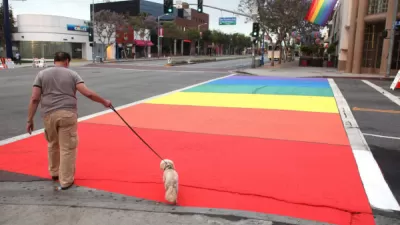
The Future of the Gayborhood
With the advancement of LGBT rights and equality, the traditionally LGBT neighborhood is changing to reflect the tastes and preferences of the new LGBT community within.

How Can D.C. be the Coolest City in America if Everyone Hates Hipsters So Much?
In which parking minimums figure heavily in a polemic regarding the nature of cool.
Chicago Metra Rail Struggles with High Rates of Suicide
Chicago's Metra commuter rail service has a big problem on its hands: Distressed people are resorting to using train tracks to end their lives at a higher rate than in other major cities. Would partnering with a suicide-hotline agency stem the tide?
Planning for Rural Minnesota's 'Brain Gain'
While the share of Americans living in rural communities is decreasing relative to the overall population, some rural areas, such as the Willmar lakes area in Minnesota, have managed to attract young residents.
What's in a Name? Gentrification Sparks Denver's Northside vs. Highlands Debate
David Conde discusses the new reality taking hold in traditionally Latino neighborhoods on the Northside of Denver, especially the reactions to the name for the area adopted by newcomers: the Highlands.
A New System for Combating 'Quality-of-Life Crimes'
A proposed ordinance currently making its way through City Hall in Los Angeles would provide a new form of enforcement for crimes such as barking dogs, loud parties, and littering—which often go unenforced under the current penal system.
The Truth about Viral Maps
Matthew Yglesias lets us peek behind the curtain of those viral maps that reveal difference between states. Hiding behind these maps is a dirty little secret about how little variation there is in America.
Seeking Input: Atlanta's 'Plan 2040'
Plan 2040 is the Atlanta region's plan to accommodate about 3 million new residents in the next 25 years. A new survey is looking for feedback about just how the region should approach that staggering growth.

What 'Rust Belt Chic' Shows about the Complexity of Cities
Belt Magazine is publishing the second edition of its "Rust Belt Chic: The Cleveland Anthology" next month. The edition's new introduction sums up will the complicated issue of Cleveland's renaissance.

Survey: Suburban Life is the Good Life
The first Atlantic Media/Siemens "State of the City Poll" finds that, overall, suburban living is the happiest living.
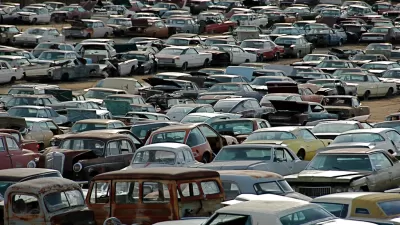
Five Reasons Why Peak Driving is Here to Stay
The Great Recession ended in the summer of 2009. Unemployment has fallen and consumer spending has risen, as have most economic metrics save one: vehicle miles traveled. There is a list of reasons why VMT hasn't risen, and perhaps won't.
New York City Does In Fact Sleep
Brian Wilt, a data scientist at Jawbone, the company behind many fitness trackers, aggregated sleeping patterns of people across the world to see how people's sleeping cycles compare.
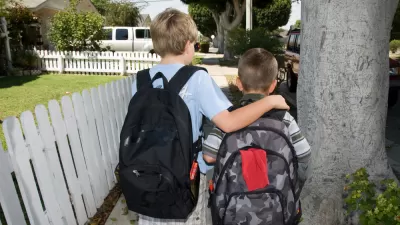
Indexing Affordability and Walkability in the United States
Dave Munson discovered the neighborhoods throughout the United States that are both affordable by his salary and walkable.
Social Mobility in America: Reality or Dream?
Richard Reeves explains the factors that limit or assist social mobility for people born into the lowest economic quintile in American society.
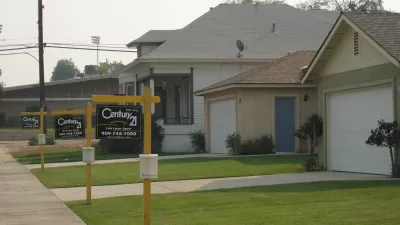
White Flight Patterns Continue Within the Suburbs
According to a recent study, white flight proliferates even in the suburbs, as suburbs attract large numbers of middle-class minority residents and white residents flee so-called 'ethnoburbs'.

Jane Jacobs' Sidewalk Ballet, Gone Forever in New York City?
Alex Marshall discusses whether Jane Jacobs' famous "Sidewalk Ballet" is dead on the streets of New York City.
Breaking Down the Demographics of Bicycle Commuters
A new report from the League of American Bicyclists discussed equity in bicycle commuting and infrastructure, causing a flurry of discussion throughout the Internet.
Lean Urbanism: A Century-Old Practice?
A short case study in Lean Urbanism, compliments of Victoria Beach, Manitoba.
California to Cap Incomes Eligible for Electric Vehicle Rebates
A bill will attempt to bring some equity to the flagrantly inequitable rebate program that subsidizes purchases of Electric Vehicles. Additional subsidies would be directed to low income families. Rebates could also be used for car share and transit.
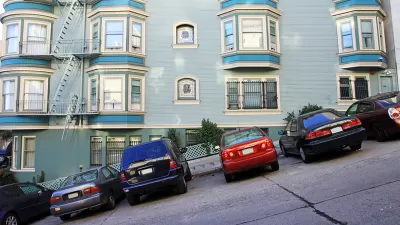
San Francisco's Housing Craze: More People Fewer Cars
Something strange is taking place in the City by the Bay. It's not just experiencing a growth in carless households—carless households are actually replacing those with cars.
Pagination
Urban Design for Planners 1: Software Tools
This six-course series explores essential urban design concepts using open source software and equips planners with the tools they need to participate fully in the urban design process.
Planning for Universal Design
Learn the tools for implementing Universal Design in planning regulations.
Gallatin County Department of Planning & Community Development
Heyer Gruel & Associates PA
JM Goldson LLC
City of Camden Redevelopment Agency
City of Astoria
Transportation Research & Education Center (TREC) at Portland State University
Jefferson Parish Government
Camden Redevelopment Agency
City of Claremont


































